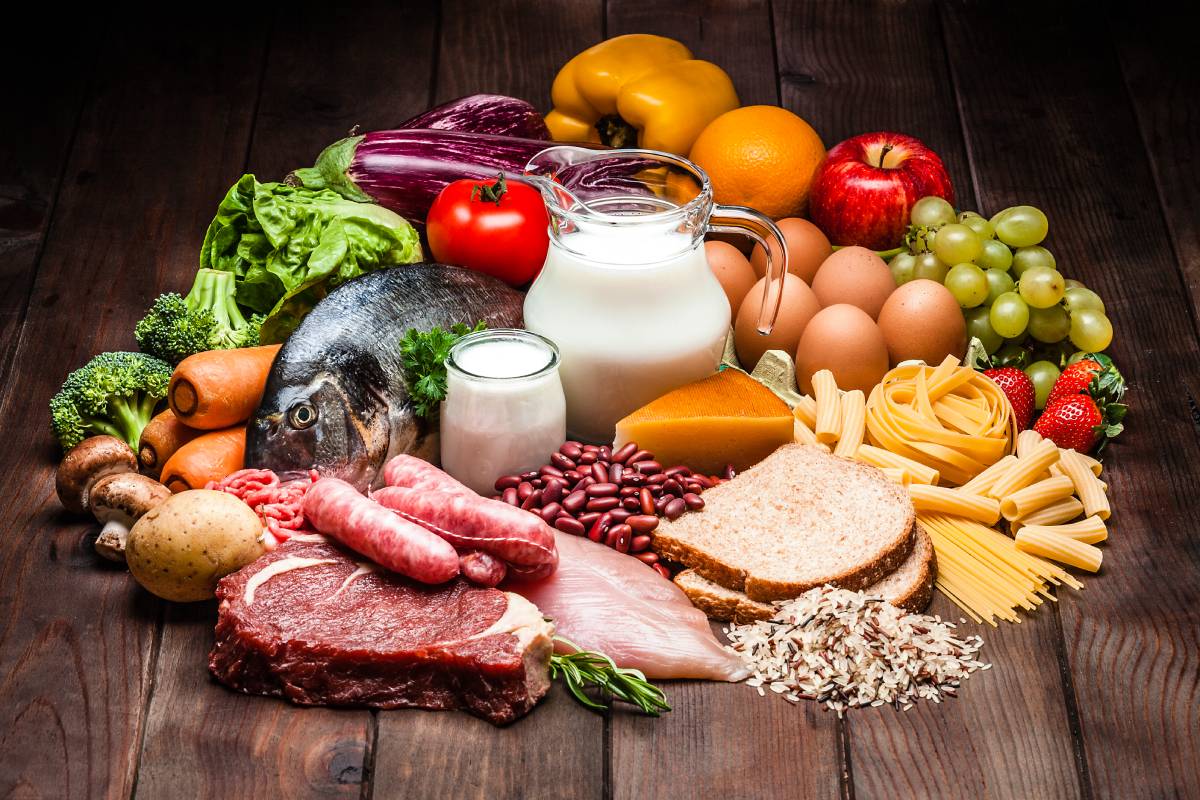Like fats and carbohydrates, proteins are macromolecules that comprise an essential part of human diets. Proteins are long chains of building blocks called amino acids, which the body uses to repair tissues, balance pH, and fuel cells. Nine of the 20 amino acids are not synthesized by humans and therefore must be obtained through one’s diet; they are known as “essential” amino acids for this reason. The National Academy of Medicine recommends that adults consume 0.8 g of protein per kilogram of body weight each day.1 Dietary protein can be found in both plant and animal sources. With more and more discussion about the health benefits of veganism and vegetarianism, this article will explore the pros and cons of animal proteins.
Adequate amounts of protein can be derived from both animal and plant sources, but the two are not equal, creating pros and cons for each of the two proteins. One reason for this, commonly referred to as the “protein package,” is that the proteins in these two food sources are naturally accompanied by other nutrients in those same foods.2 The meats that contain animal proteins, for example, also contain saturated fatty acids, which may be associated with higher cholesterol levels and an increased risk for heart disease,3 while most plants contain low amounts of saturated fatty acids and are instead high in fiber.4 This, however, is also an advantage of animal proteins: because, unlike plant proteins, they are not coated in fiber, they can be digested more easily than plant proteins.
Animal proteins enjoy several other advantages over plant proteins. Though the nine essential amino acids are present in both animal and plant foods, they do not necessarily all exist in adequate amounts in each protein-containing food. The amino acid score (AAS) of a given protein is a measure of its content of essential amino acids compared to how much of each is required in a healthy diet. The digestible indispensable amino acid score (DIASS) of animal proteins tends to be higher than animal proteins. Whole milk powder, for example, has a DIASS of 122, while peas have a DIASS of 64 and wheat sits at 40.5
Dietary protein is critical for muscle mass. A 2021 meta-analysis of 16 articles comparing the respective ability of animal and plant protein to simulate muscle protein synthesis found that the protein source did not affect muscle strength or absolute lean mass.6 Animal protein was, however, found to be associated with an increase in percent lean mass. Additionally, plant proteins are more likely than animal proteins to be converted to urea, which is excreted and renders these plant proteins unavailable for muscle protein synthesis.7
Certain animal protein sources also offer distinct advantages. A regular diet of fish, for example, which contains a roughly equivalent amount of protein to a diet of beef or poultry, is associated with a number of health benefits. These include a lower incidence of coronary heart disease8 and lower rates of cognitive decline.9 The omega-3 fatty acids found in many types of fish are responsible for these benefits.
Though both animal and plant proteins can contribute to a healthy diet, the current research, as outlined above, seems to indicate that weighing the pros and cons suggests animal proteins are slightly more beneficial than plant proteins. That being said, taking appropriate steps can help those who are vegan or vegetarian ensure they are consuming enough protein. Further research on the pros and cons of animal and plant proteins is critical to better understanding these staples of our diets.
References
1. Dietary Reference Intakes for Macronutrients | National Academies. https://www.nationalacademies.org/our-work/dietary-reference-intakes-for-macronutrients.
2. Hu, F. B. Plant-based foods and prevention of cardiovascular disease: an overview. Am J Clin Nutr 78, 544S-551S (2003), DOI: 10.1093/ajcn/78.3.544S
3. Saturated Fat. www.heart.org https://www.heart.org/en/healthy-living/healthy-eating/eat-smart/fats/saturated-fats.
4. Mariotti, F. Animal and Plant Protein Sources and Cardiometabolic Health. Adv Nutr 10, S351–S366 (2019), doi: 10.1093/advances/nmy110
5. Elmadfa, I. & Meyer, A. L. Animal Proteins as Important Contributors to a Healthy Human Diet. Annual Review of Animal Biosciences 5, 111–131 (2017), DOI: 10.1146/annurev-animal-022516-022943
6. Lim, M. T., Pan, B. J., Toh, D. W. K., Sutanto, C. N. & Kim, J. E. Animal Protein versus Plant Protein in Supporting Lean Mass and Muscle Strength: A Systematic Review and Meta-Analysis of Randomized Controlled Trials. Nutrients 13, 661 (2021), DOI: 10.3390/nu13020661
7. Bos, C. et al. Postprandial metabolic utilization of wheat protein in humans. The American Journal of Clinical Nutrition 81, 87–94 (2005), https://doi.org/10.1093/ajcn/81.1.87
8. Zhang, B., Xiong, K., Cai, J. & Ma, A. Fish Consumption and Coronary Heart Disease: A Meta-Analysis. Nutrients 12, 2278 (2020), doi: 10.3390/nu12082278
9. van de Rest, O. et al. APOE ε4 and the associations of seafood and long-chain omega-3 fatty acids with cognitive decline. Neurology 86, 2063–2070 (2016), DOI: 10.1212/WNL.0000000000002719

